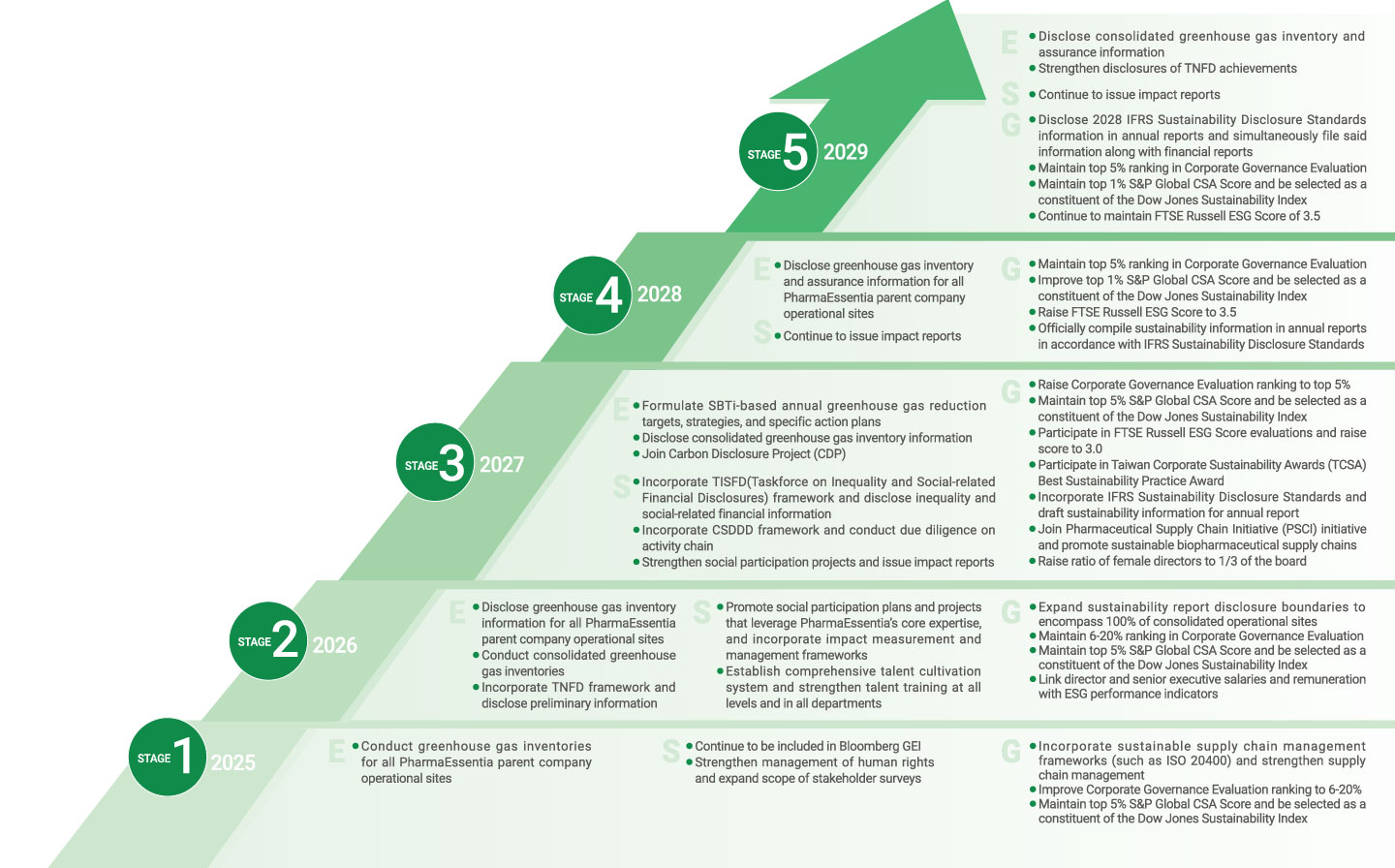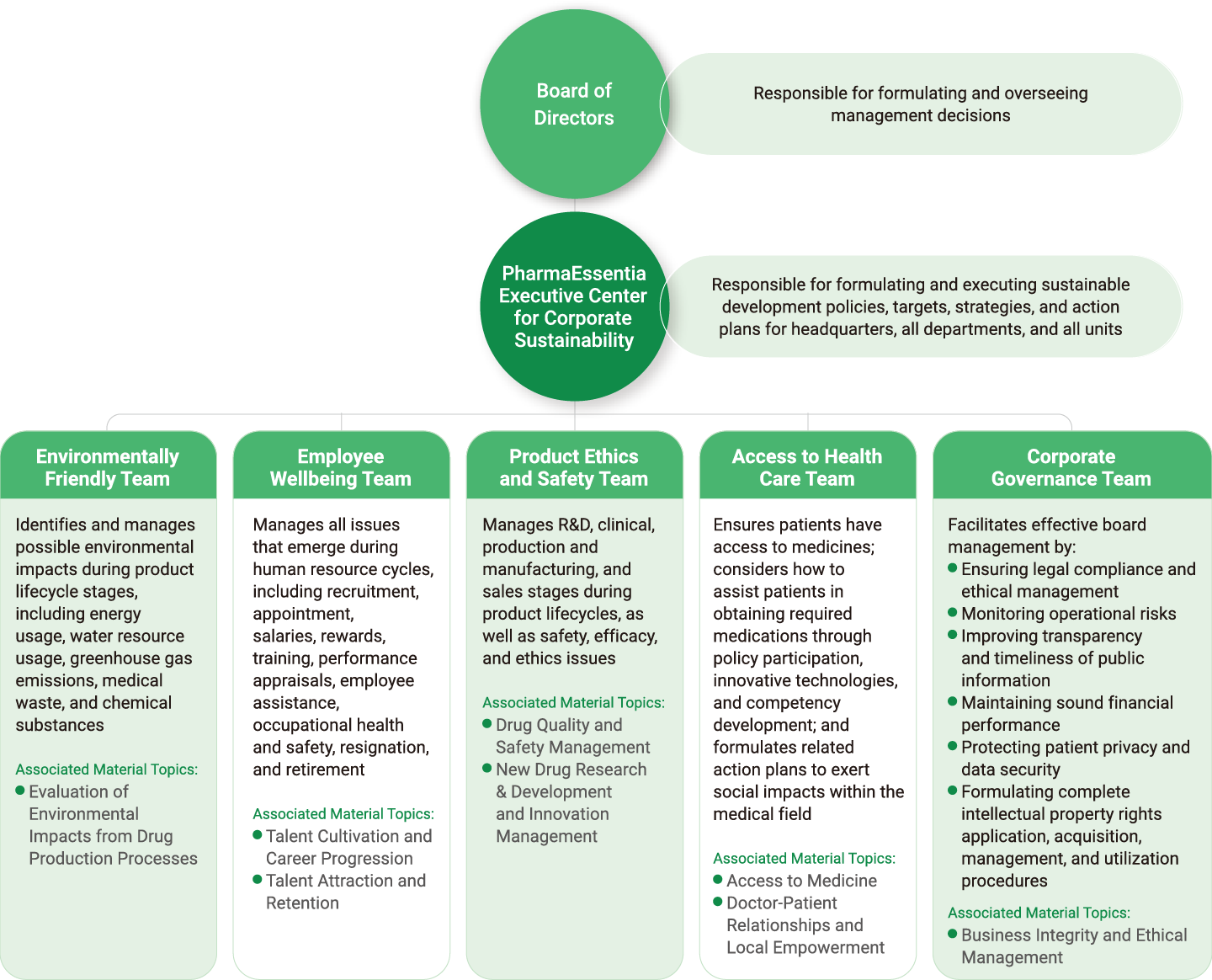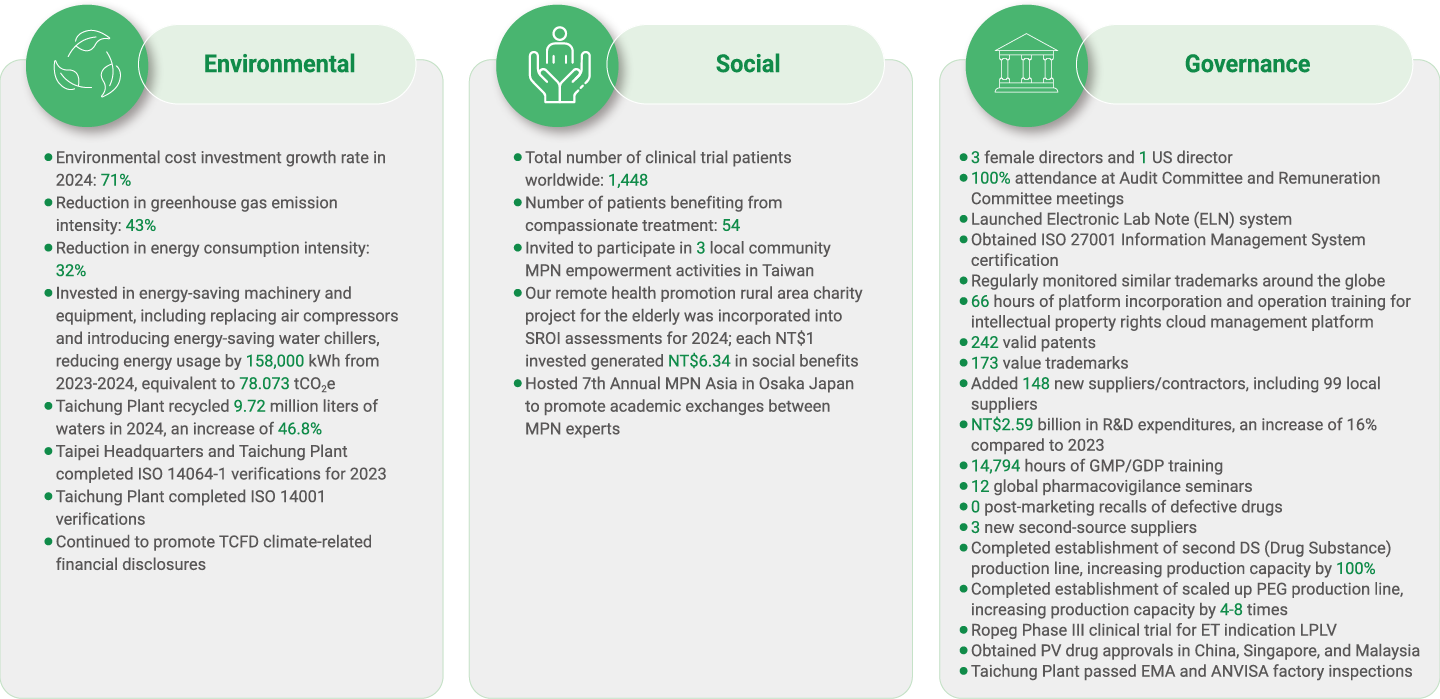Sustainable Development Goals and Blueprint
PharmaEssentia formulated a five-year sustainable development blueprint after considering biopharmaceutical industry characteristics, sustainability trends, and stakeholder needs. We hope to continue improving our sustainability actions on environmental, social, and governance aspects to exert positive corporate impacts.


Sustainable Governance Operations & Achievements
Sustainable Governance Organizational Structure
The Board of Directors is the highest governance unit at PharmaEssentia, and is responsible for formulating and overseeing management decisions. In 2019, we established the Executive Center for Corporate Sustainability and five functional teams to execute sustainable development projects. Relevant achievements are directly reported to the CEO (who is responsible for management of sustainability impacts), promotional progress and results for all projects are reported to the Board every quarter, and sustainability reports are also submitted to the Board every year.


Sustainability Achievements in 2024


